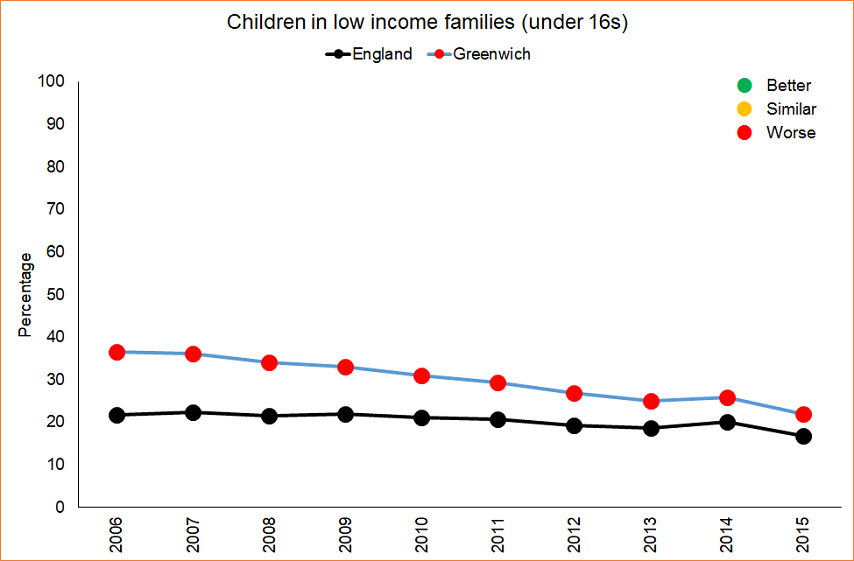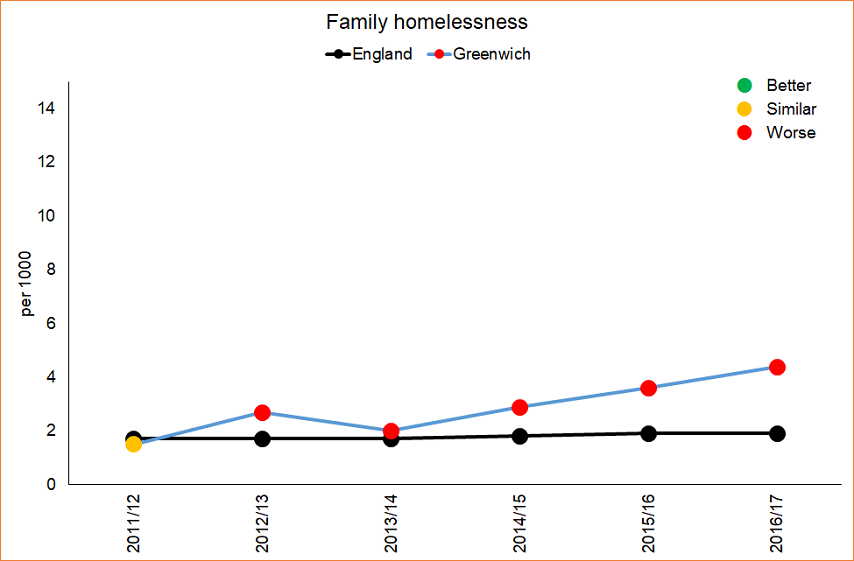Greenwich is the 50th most deprived Local Authority in England (rank out of 326 authorities) placing the borough district in the top 20% most deprived authorities. Greenwich ranks 20th out of 33 boroughs in London for deprivation. At the neighbourhood geography there are 151 LSOAs within Greenwich. There are 3 that fall within the 10% most deprived neighbourhoods and 38 in the 20% most deprived neighbourhoods in England. In terms of deprivation for children, the Indices of Deprivation Affecting Children Index (IDACI) shows there are 18 areas that are in the 10% most deprived areas and 52 that are in the 20% most deprived areas in England.
The Marmot Review (2010) suggests there is evidence that childhood poverty leads to premature mortality and poor health outcomes for adults. Reducing the number of children who experience poverty should improve these adult health outcomes and increase healthy life expectancy.
"A New Approach to Child Poverty: Tackling the Causes of Disadvantage and Transforming Families' Lives" set out the Government's approach to tackling poverty. It was published during the Coalition government, looking ahead to 2020. This strategy meets the requirements set out in the Child Poverty Act 2010, focuses on improving the life chances of the most disadvantaged children, and sits alongside the Government's broader strategy to improve social mobility.
Overall in Greenwich there are significantly higher rates of children in poverty than the national and regional averages.

Source: Public Health Outcomes Framework
Children from homeless households are often the most vulnerable in society. Homelessness is associated with severe poverty and is a social determinant of health. Homelessness is measured by the number of households eligible for assistance (1996 Housing Act) that are unintentionally homeless and in priority need. Priority need categories of household include dependent children or pregnant women.
Family homelessness in Greenwich have been increasing since 1213/14 50% in 2014/15; 535 families identified as homeless compared to 361 in the previous year (2013/14), showing a much bigger rise than national rates. Again it is recommended that this is monitored.

Source: Public Health Outcomes Framework